The endgame in Path of Exile 2 is vast, complex, and packed with variety to appeal to every kind of player. No matter if you are into tough boss fights, loot-heavy mapping, strategic crafting, or pushing your build to its limits, there is a system here for you. In this guide, we will walk you through everything you need to know about how endgame works, from Atlas progression to Trials, Pinnacle Bosses, and more.
The Atlas of Worlds
The Atlas of Worlds is the main endgame system in Path of Exile 2. It unlocks after you finish the currently available campaign (Act 4 & 3 Interludes), giving you access to a massive network of interconnected maps. Each map has unique enemies, mechanics, and rewards, creating a sort of ever-evolving experience for players. All maps contain a Map Boss, and defeating the boss completes the map.
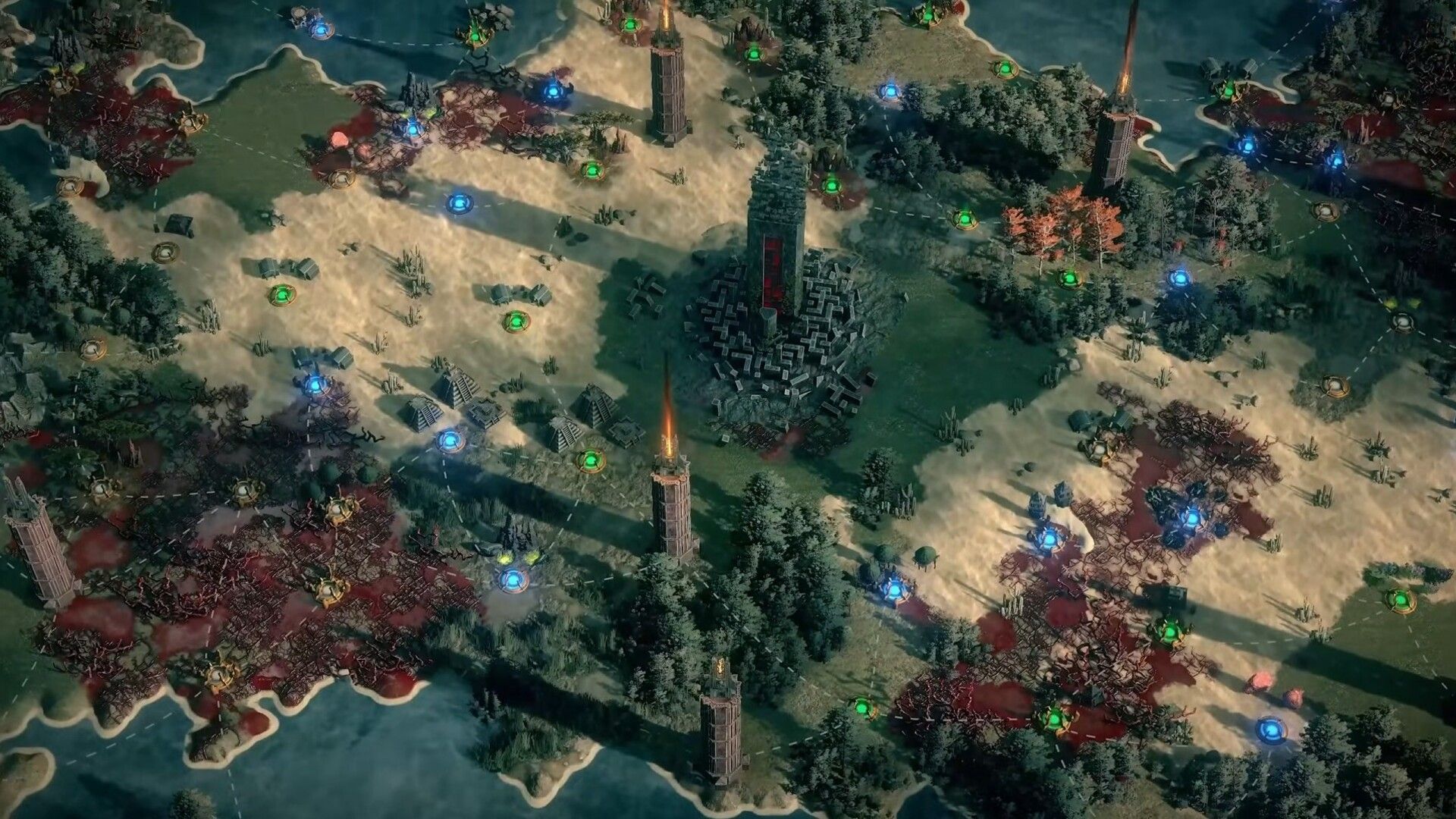
Core Features
- Maps: These are the core content nodes of the Atlas. Each has unique enemies and loot.
- Waystones: Required to open maps and can be crafted or dropped. They reliably drop from final map bosses, especially in Tier 1 maps. Their drop rate scales with map tier, Atlas passives, and Waystone suffixes. To open a Corrupted Nexus map, your Waystone must have at least 4 modifiers. Note: Waystones do not drop below the tier of the map you are in.
- Realmgates: Special portals used to enter boss zones and unique encounters.
- Atlas Passive Tree: Spend points to boost specific mechanics like Breach, Rituals, Delirium, etc.
- Precursor Tablets: Items that are placed directly into the Map Device to add extra mechanics or bonuses to the map you are about to run.
- Each Tablet has 10 charges, a max of 3 Tablets can be used per map, and the second and third slots require Waystones with 3 and 6 modifiers respectively.
- Towers only grant Atlas visibility and drop one additional Tablet when completed.
Corrupted Nexus and Cleansed Maps
Some areas on the Atlas are afflicted by Corruption. These zones contain a Corrupted Nexus; a powerful central encounter that spawns tough enemies, ending in a boss fight tied to each faction. Defeating the Nexus grants Crystalline Shards, which can be traded for Atlas Passive Points.
Once a Nexus is cleansed, it will convert nearby areas into Cleansed Maps. These maps then feature new monster types, rebalanced loot, and exclusive rewards, including the Fracturing Orb, a rare currency item used to lock modifiers on rare gear.
You have to use Waystones to open a Corrupted Nexus; the Waystone used can not have more than 8 modifiers when Corrupted.
For a detailed breakdown of the Atlas, check out our dedicated Atlas of Worlds guide.
Atlas Events: Specialized Encounters
Maps can roll 1 to 3 random mechanics, adding variety and rewards to your runs. These mechanics include Breach, Ritual, Delirium, Expedition, Shrines, Essences, Strongboxes, Wisps, Rogue Exiles, and Summoning Circles. These mechanics no longer appear as icons on the Atlas.
Breach
Breach Tablets are placed directly into the Map Device to add extra mechanics or bonuses to the map you are about to run. Tablets no longer use Towers to affect nearby maps.
What It Is: Breaches are timed portals that spawn hordes of enemies. Clear them quickly to keep the portal open and to increase rewards.
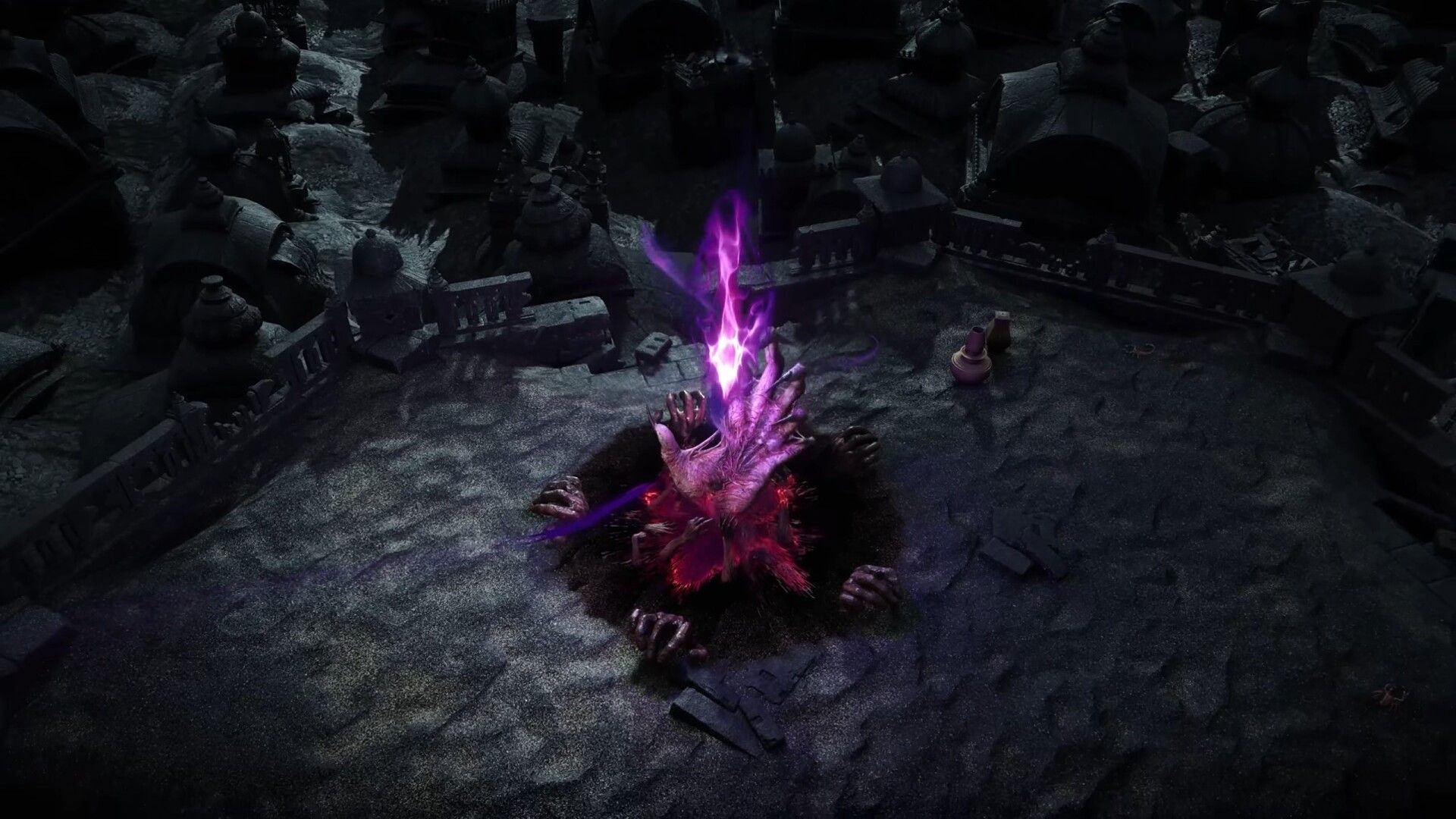
Rewards:
- Catalysts: Improve the quality of rings and amulets.
- Breach Rings: Powerful, breach-exclusive items that can be further improved with Catalysts.
- “Breach Tablets“: Precursor Tablets can include Breach modifiers, and when placed into the Map Device, they add Breach mechanics directly to the map.
- Breach Splinters are used to open the Xesht encounter directly. You need 50 for Tier 1, 100 for Tier 2, or 150 for Tier 3. Breachstones are no longer used.
Breach events also offer additional interactions and loot through the Atlas passive tree. For example:
- Grasping Hands: Increases the number of Clasped Hands as well as granting a chance for each of them to be guarded by a pack of additional Magic Monsters.
Breach Pinnacle Boss: Xesht, We Who Are One, is accessed by spending Breach Splinters at the Realmgate.
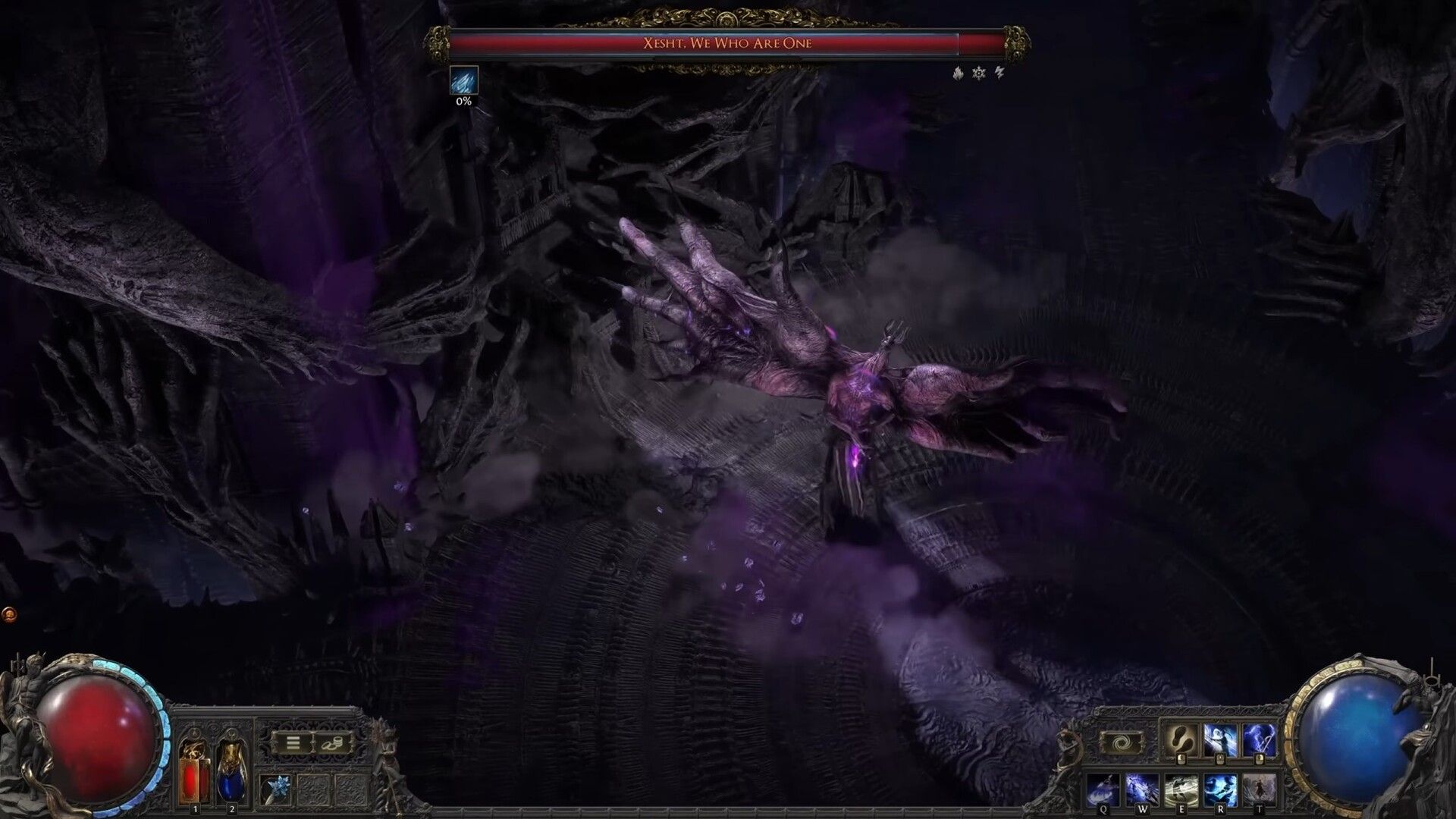
Ritual
Use Precursor Tablets with Ritual modifiers inside the Map Device to add Ritual encounters to your map.
What It Is: Rituals involve sacrificing enemies at altars to earn Tribute, which you can exchange in the Favour Shop for exclusive rewards.

Rewards:
- Tributes: A currency for purchasing items in the Favour Shop.
- Omens: Unique crafting items found exclusively in Rituals.
- “Ritual Tablets”: Precursor Tablets may add Ritual encounters when placed into the Map Device. Ritual-specific Tablets no longer exist.
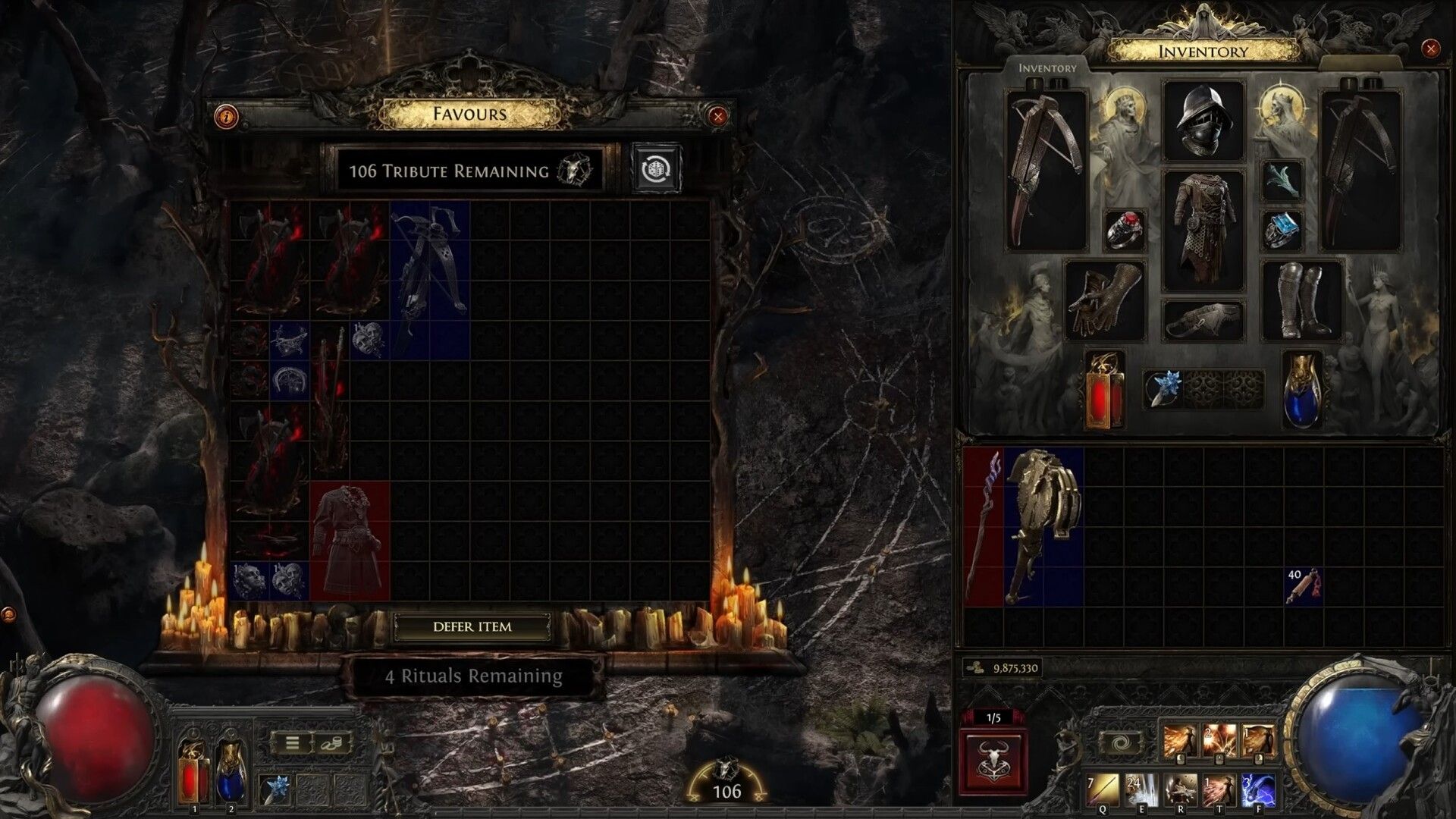
Ritual Pinnacle Boss: The King in the Mists is summoned using Petition Splinters at the Realmgate.
He is no longer accessed via map fragments. The Crux of Nothingness is opened through splinters instead.
Delirium
Precursor Tablets with Delirium modifiers also go into the Map Device, adding Delirium fog or encounters directly to the map.
What It Is: A timed event that engulfs maps in mist, spawning empowered enemies. Enter through Delirium Mirrors and defeat waves of enemies to fill the reward bar.
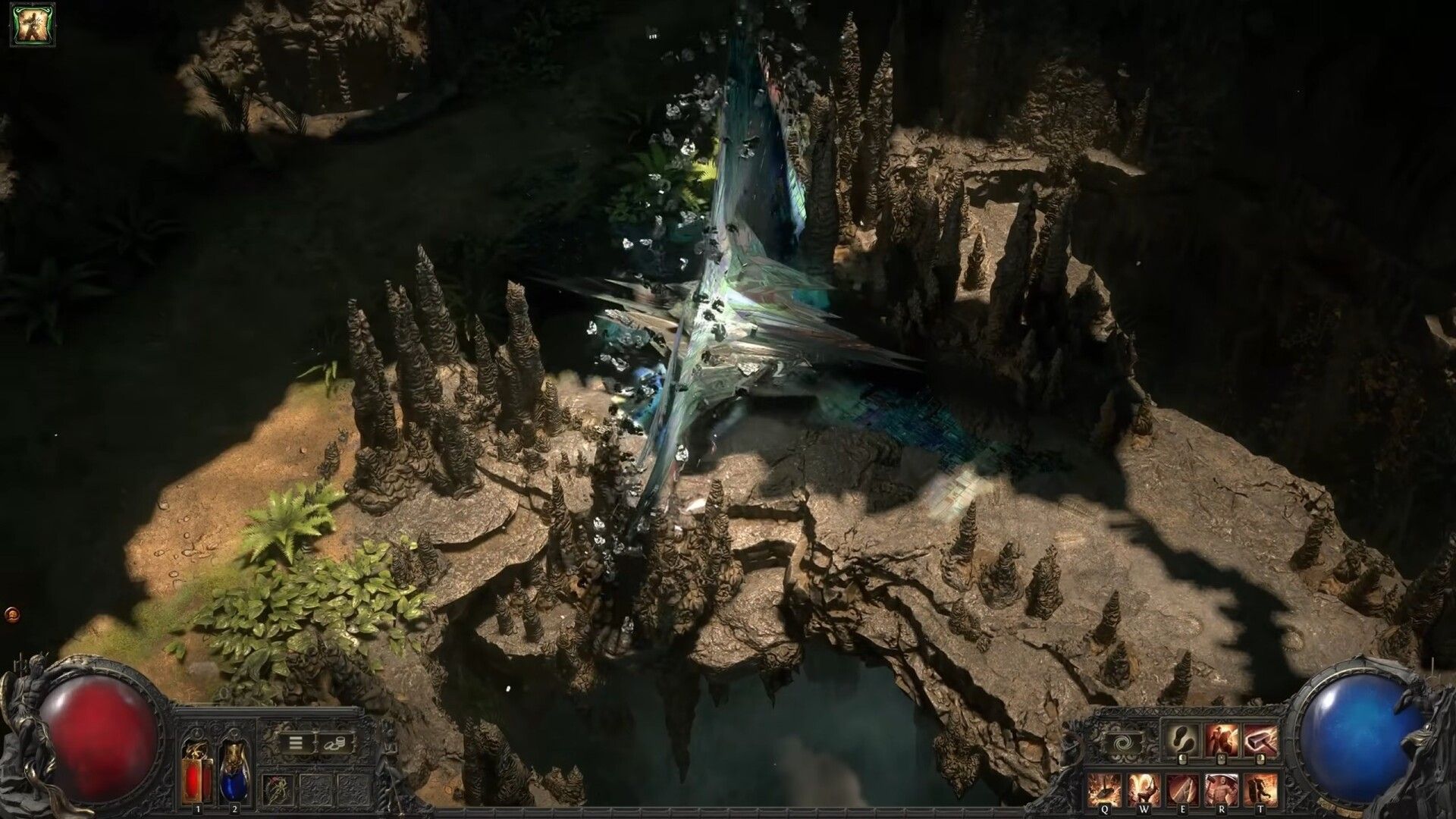
Rewards:
- Liquid Emotions: Apply passive effects to amulets.
- Simulacrum Splinters are used to open the Delirium boss arena at the Realmgate. The full Simulacrum item is not required.
Simulacrum (0.4.0): A high-difficulty arena accessed via Simulacrum Splinters, offering a sequence of escalating encounters that can include boss fights.
Expedition
What It Is: Assist Kalguuran settlers by strategically placing explosives to uncover artifacts and treasures. Fight off waves of enemies to secure your loot.
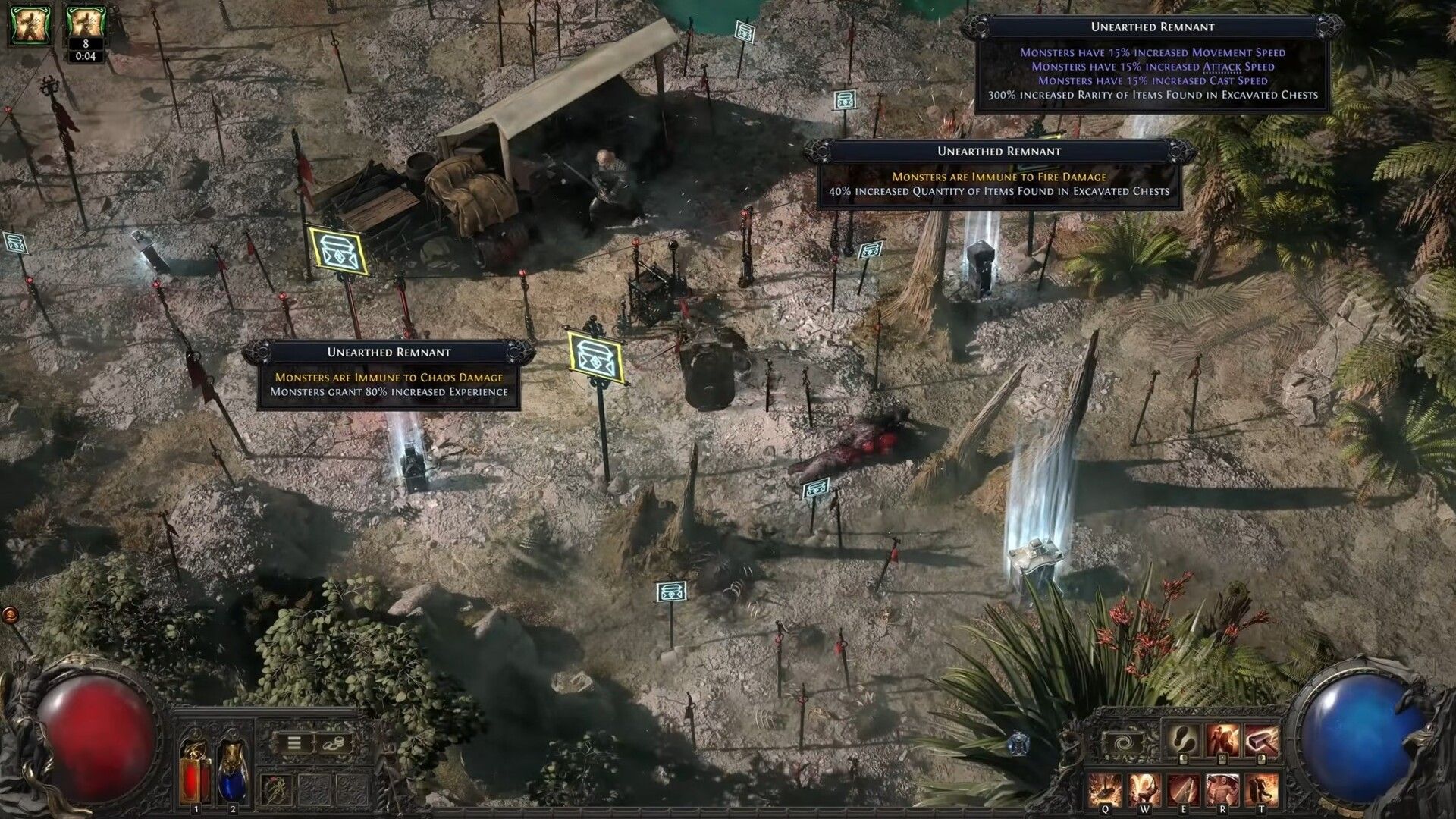
Rewards:
- Verisium Artifacts: Trade with Kalguuran vendors for unique rewards.
- Logbooks: Special items that unlock improved Expeditions with better loot.
- Unique Items: Powerful, exclusive gear.
- Recombination: A crafting system that lets you combine mods from two items with a risk of failure.
Olroth no longer spawns inside Expedition Logbooks. Logbooks now drop Runic Splinters, which are used at the Realmgate to open the Olroth fight (50/100/150 depending on tier).
Abyss
Since the Patch 0.3.0 – Rise of the Abyss League, you can also access a new zone called the Abyss. Each of those zones includes a fissure with a hole leading to larger Abyssal Pits. You have to defeat all the monsters in the area to close the fissures and attract the monsters. Once all the fissures are closed, you have a chance to open the hole to the Abyssal City. Abyss retains its icon on the Atlas.
Once you defeat everything, those zones reward you with a massive amount of exclusive loot:
- Gnawed Bones
- Kurgal’s Leash
- Omen of Abyssal Echoes
- Ulaman’s Gaze
- Darkness Enthroned
- Undying Hate
- And more!
Trials of Endurance and Chaos
Outside of the Atlas, Path of Exile 2 also features Trials, which are challenging gauntlets that test your skill and adaptability.
Trial of Sekhema
- Location: Act 2, Vastiri Plains.
- Objective: You have to navigate through rooms with distinct challenges, including defeating waves of enemies, evading traps, and more. It is important to note, that you have to manage ‘Honor’ instead of health. Taking damage depletes Honor, and running out of it will result in trial failure!
- Rewards:
- Jewels: Powerful items socketed into your passive tree.
- Unique Relics: Valuable, game-changing artifacts.
Trial of Chaos
- Location: Act 3, Temple of Chaos.
- Objective: Choose tribulations before each room to modify challenges and rewards. Survive multiple rooms and defeat randomized bosses.
- Rewards:
- Vaal Orbs: Used to corrupt items, with both high risks and high rewards.
- Soul Cores: Rare, powerful modifiers for gear.
Pinnacle Bosses
Pinnacle bosses are the highest challenge you can aim for in Path of Exile 2’s endgame, offering the greatest rewards for the toughest encounters. There are seven different endgame systems, each with its own type of enemies, rewards, and Pinnacle Bosses, such as:
- Xesht, We Who Are One: Accessed using Breach Splinters at the Realmgate.
- The King in the Mists: Accessed using Petition Splinters at the Realmgate.
- Olroth, Undead Commander: Accessed using Runic Splinters at the Realmgate.
- The Burning Monolith: The pinnacle of the Atlas, requiring three keys from faction leaders to enter.
Tip: Invest in Atlas Passives related to pinnacle bosses if you want to increase respective rewards.
Realm Gates
Realm Gates are special portals located within the Atlas, through which you can enter unique zones and Pinnacle Boss encounters.
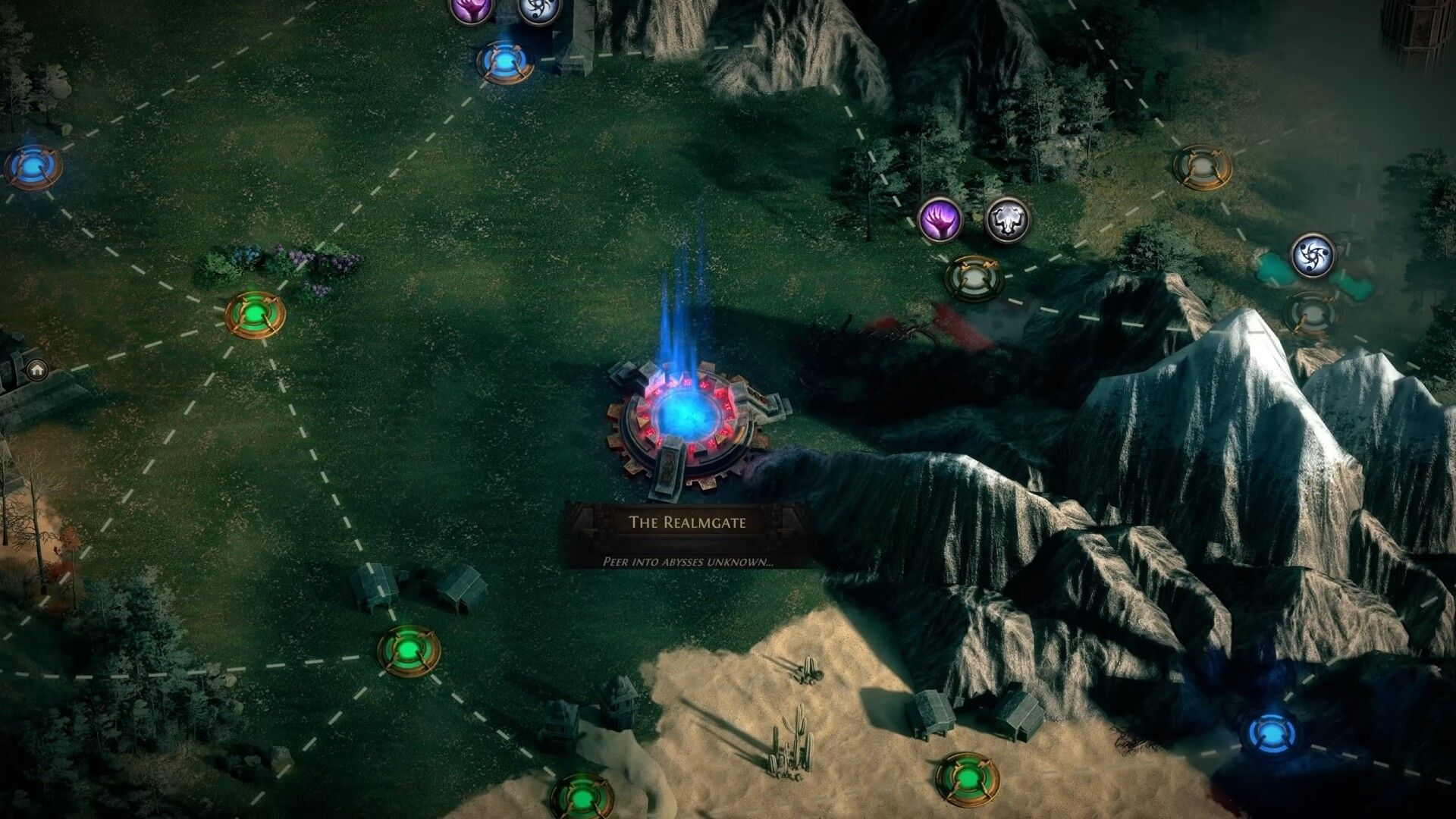
Keep in mind, though, that accessing pinnacle bosses like The Burning Monolith or Twisted Domains requires dedication and preparation. Start by farming the splinters tied to each mechanic, since all four Pinnacle encounters now use splinters instead of older key items.
How to Unlock Realm Gates:
You have to complete the three interludes (post-campaign mini-acts) in order to unlock the Atlas and its associated Realm Gates. Afterward, you can access the gates by using special items to open portals to respective encounters:

- Breach Splinters: Open portals to Twisted Domains.
- Simulacrum Splinters: Open the Delirium boss encounter.
- Petition Splinters: Summon the King in the Mists.
Splinters are items used at the Realmgate. Upon inserting them, an interface will appear, allowing you to pick your difficulty, each with a different entry cost.
Rewards:
Pinnacle Bosses accessed through Realm Gates offer exclusive items and Atlas Passive Points!
The Burning Monolith
The Burning Monolith is the most challenging zone in the Atlas and the ultimate Pinnacle Boss.
Only Normal and Uber versions exist. The Uber version requires Calamity Fragments and downgrades to the Normal encounter if you die during the attempt.
Access Requirements:
You must gather three keys from the faction leaders across the Atlas. Once you have all three, you can open the Realmgate to the Monolith and face the encounter.
The Encounter:
The Burning Monolith no longer uses the older maze or faction-race mechanics. The fight now focuses entirely on the boss encounter itself, with difficulty scaling based on the version you select.
Rewards:
Successfully defeating the boss rewards unique items and special Atlas Passive Points for the Burning Monolith section of the tree.
Endgame Customization
The Atlas Passive Tree allows you to shape your endgame experience. When allocating points in the Atlas Passive Tree, consider your build’s strengths. Summoners may benefit more from nodes increasing monster density, while ranged builds might benefit more from focusing on loot-heavy mechanics like Breaches. So invest in nodes that make sense for your build.
- Precursor Tablets: Placed into the Map Device to further amplify gameplay and rewards. They no longer interact with Towers.
Precursor Tablets
Precursor Tablets are special items in Path of Exile 2 that let you customize and improve your maps. You will find them as you explore the Atlas, and you can place them directly into the Map Device to apply their effects to the map you are opening. A Tablet has 10 charges, and maps consume 1 charge each. Up to 3 Tablets can be used per map depending on Waystone modifiers.
Towers no longer apply Tablet effects; they now only provide Atlas visibility and drop one Tablet.
The number of extra mechanics added to maps by a Tablet scales with the Tier of the Waystone used to open those maps.

How to Obtain and Use Precursor Tablets
- Drops: Precursor Tablets are dropped during respective encounters across the Atlas.
- Slotting Tablets: Place Tablets into the Map Device. The number of Tablet slots available is determined by your Waystone’s modifiers.
- Crafting and Upgrading: Tablets can also be crafted or upgraded for stronger effects.
Corruption Mechanics
Corruption in Path of Exile 2 allows you to push the limits of your gear with unique modifiers, but at a cost.
- Corrupting Items: Use Vaal Orbs or Corruption Altars to modify items. Possible outcomes include adding implicit modifiers, rerolling stats, or altering sockets.
- Irreversible Changes: Once corrupted, items can no longer be modified by traditional crafting methods.
- Sources:
- Vaal Orbs: Consumable items used for corruption.
- Corruption Altars: Found in areas like Jiquani’s Sanctum, offering unique outcomes for corruption.
Corruption is a gamble; it can greatly improve an item’s power or make it less effective. Corruption Mechanics is a high-risk, high-reward crafting strategy for players looking to push their gear to the limit. While it is understandable that everyone wants to create or adjust their equipment with powerful modifiers, corruption is permanent and can result in negative outcomes. Use tools like Vaal Orbs and Corruption Altars only on items you are willing to risk!
If you are interested in getting a more detailed look at specific mechanics, please check out the other guides on our Path of Exile 2 guides homepage.
 Druid
Druid Huntress
Huntress Mercenary
Mercenary Monk
Monk Ranger
Ranger Sorceress
Sorceress Warrior
Warrior Witch
Witch
